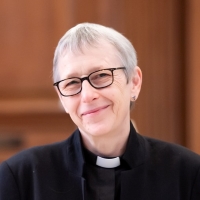When I was in Cyprus for a conference in 2019, as a guest of the Greek Orthodox Church, I was rather surprised to find myself taken to see the tomb of Lazarus – the very same Lazarus who features in our New Testament reading this evening – in the church that bears his name, in Larnaca.
The story goes, according to Orthodox tradition, that Lazarus, revived from the dead by Jesus, was forced to flee Judea after the resurrection of Christ, because of plots against him, and so he travelled to Cyprus. Legend has it that it was St Paul himself who appointed Lazarus as the first Bishop of Kition, a position that he held for about thirty years, before he died and was buried in the tomb that you can now visit under the church of Agios Lazaros. So, Lazarus has the rather odd and dubious distinction of having had to undergo the ordeal of death not once but twice.
I have always been struck by the fact that in traditional representations of the story of the raising of Lazarus, as he emerges from his stone cold tomb trailing bandages and winding sheets, he never looks particularly joyful – quite the opposite. The amazement, incredulity, and delight of his bereaved sisters, who were so distraught at his death, seems to escape the man himself altogether.
The story of the raising of Lazarus is a very significant symbolic story in the New Testament, both for its parallels to, and its significant difference from, the resurrection of Jesus. St John’s Gospel has comparatively few miracle stories, but the ones that it does include are all remarkable for their truly spectacular nature. Nothing is left to chance in John’s Gospel– none of these miracles can be explained away. So it is that in John it is not simply a blind man whose sight is restored, but a man who was actually born blind. And in our story this evening, the raising of Lazarus is not simply the equivalent of the raising of the dead daughter of Jairus, who has died moments before Jesus arrives to visit her, finding her still warm in her bed: this time it is a man who is not only completely, totally and unquestionably deceased, but a man who has been decomposing in the grave for four days, as the Gospel writer is at pains to point out.
All of which points to the remarkable miraculous powers of the true Messiah, the one who is empowered by the God who is the Creator of all, who holds the powers of life and death in his hands. But it is very important to remember that in all of the Gospels the miracles are not themselves the point – they are not ends in themselves. Rather, they are simply merely events where the true glory and transformative power of God come flashing out, amazingly and astoundingly
And although the story of the raising of Lazarus unquestionably serves to prepare us, both theologically and spiritually, for the forthcoming resurrection of Jesus from the dead, the two events are not the same thing at all. In the story of Lazarus, a dead man is simply resuscitated – which is why he ended up dying for a second time. Whereas, in the resurrection of Christ we encounter what is truly a new creation. The one who emerges from the tomb on Easter Day is no longer simply the earthly Jesus, the man who walked this earth with his disciples – but the Risen Christ: there is change as well as continuity: he is recognisably the same, yet notably different. The resurrected life is continuous with yet different from this life. It is transformed and transformative. Death has been truly and definitely conquered – because it could not hold him.
Little wonder then that artists and poets throughout the centuries have sometimes reflected, by comparison, on the rather unfortunate lot that befell Lazarus, who ends up in a really quite tricky situation. The American poet Charles Darnell begins his poem, ‘Lazarus’ with the following words:
Ah Jesus! You do me no favors!
You give me life, but not my life!
You raise me up, what am I to do?
You are borne away with the crowd,
Shouting hosannas as you go,
Like the retreating tide
Pulls pebbles from the shore.
I am like shells on the sand.
Empty, hard husk, standing out for the curious,
But I shall not be picked up by wondering hands.
Those who know me, loved me, know me not now.
I am not the phoenix reborn with youth and soaring strength,
Just Lazarus, already tottering to my second tomb.
His poem ends with the haunting lines:
I see my future years ahead,
The unnatural soul moving alone
Through my unnatural days.
My God, my God,
Why have you forsaken me?
And Darnell has a point of course.
But the point of all of this is to remind us to be alert to what Resurrection faith really means. Because it is not about resuscitating those aspects of life that we cannot bear to lose and desperately wish to cling on to. Rather, it is the challenge and the opportunity to allow that which needs to die to be laid to rest, that something new and more remarkable might be permitted to take its place.
That is resurrection faith, and resurrection life; and therein lies the true hope and the full joy of Easter.
Amen



